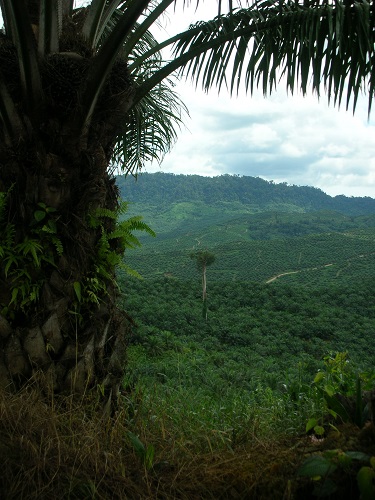Human impacts on biodiversity and ecosystem functioning
Ecosystems worldwide are increasingly threatened by human activities, including climate change and the degradation and fragmentation of natural habitats. A major focus of research within our group involves exploring the consequences of these changes for biodiversity, and for the ecosystem functions and services that plants and animals provide. We focus on a diversity of threats including forest fragmentation, elevated temperatures and non-native species, and measure the consequences for a variety of biodiversity metrics, including species diversity, functional diversity and food web structure.
Some components of this work are observational, such as documenting patterns of host-parasitoid interactions within fragmented landscapes; but we also use manipulative experiments. A particular focus is on the diversity and functioning of decomposer organisms associated with animal faeces, especially dung beetles. Here, we can carry out replicated experiments within mesocosms, exploring how the important function and service of dung decomposition is affected by variations in different components of biodiversity (e.g. species richness), and by environmental changes such as pesticide use and climate change.
Like most tropical ecologists we enjoy working in pristine forested habitats, but the tropical landscape is increasingly dominated by human land uses such as forestry and oil palm plantations. How and where does biodiversity persist in these landscapes, and how might we reconcile agriculture and forestry with the maintenance of biodiversity and associated ecosystem services? We have been exploring how riparian reserves (areas of natural vegetation along streams and rivers) within oil pam plantations can boost the diversity of plantations which otherwise are biodiversity deserts.
Building on such studies, our group is leading a multi-institution, multi-disciplinary consortium (LOMBOK: Land-use Options for Maintaining Biodiversity), funded as part of NERC’s programme on ‘Human Modified Tropical Forests’. Our team is working within the experimental Stability of Altered Forest Ecosytems (SAFE) landscape in Sabah, Malaysian Borneo, to explore biodiversity patterns across an anthropogenic land-use gradient. We are measuring biogeochemical cycles and fluxes, exploring correlations between diversity of a wider variety of taxa and both observed and modelled levels of ecosystem functioning. Our ultimate goal is to explore realistic policy scenarios that could optimize biodiversity and ecosystem function provision in Sabah and more widely in human-modified tropical landscapes.
Study systems and sites
Fieldwork within this theme currently occurs in the UK, Panama and Malaysia.
Funding
Work on this theme is funded by NERC and by the Royal Society.
Key publications
Gray, C. L., Lewis, O. T., Chung, A. Y. C., Fayle, T. M. (2014). Riparian reserves within oil palm plantations conserve logged forest leaf litter ant communities and maintain associated scavenging rates. Journal of Applied Ecology, in press. doi: 10.1111/1365-2664.12371
Gray, C. L., & Lewis, O. T. (2014). Do riparian forest fragments provide ecosystem services or disservices in surrounding oil palm plantations?. Basic and Applied Ecology, 15(8), 693-700.
Slade, E.M., Merckx, T., Riutta, T., Bebber, D.P., Redhead, D., Riordan, P., Macdonald, D.W. (2013) Life-history traits and landscape characteristics predict macro-moth responses to forest fragmentation. Ecology, 94, 1519-1530
Beynon, S.A., Slade, E.M., Mann D.J. & Lewis, O.T. (2012). Species-rich dung beetle communities buffer ecosystem services in perturbed agro-ecosystems. Journal of Applied Ecology 49, 1365–1372.



